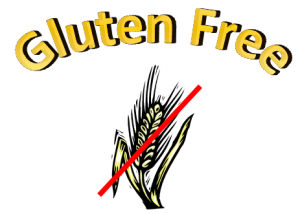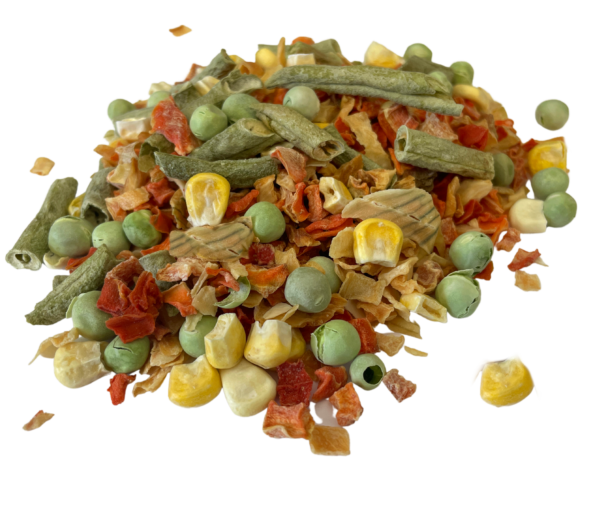
Hikers often report feeling mentally and physically better when on a gluten-free or gluten-light diet while on the trail. However, gluten, a protein found in wheat, barley, and rye, can be challenging to eliminate. Gluten is present in most high-carbohydrate backpacking foods, such as pasta and rice meals, cereals, and packaged snacks.
Preparation is key when it comes to gluten-free backpacking food. Before embarking on your journey:
- Take the time to plan your meals and snacks carefully.
- Consider factors such as caloric density and ease of preparation.
- Opt for lightweight, non-perishable ingredients that sustain energy throughout your trek.
Learn to recognize gluten. It’s nearly everywhere in various forms!
List of Grains Containing Gluten
The following are everyday products that contain gluten. Most are made from different wheat grasses. Others use traditional wheat processed in multiple formats.
- Barley
- Bulgar (wheat)
- Couscous (wheat)
- Durum (wheat)
- Emmer (wheat)
- Farro (wheat)
- Farina (could be finely ground wheat, but can also be from a gluten-free grain such as corn or rice)
- Fu (Asian wheat gluten/seiten)
- Kamut (wheat)
- Malt (barley)
- Matza (wheat)
- Rye (wheat)
- Spelt (wheat; better tolerated by those with mild gluten sensitivity due to its lower gluten content)
- Seitan (wheat)
- Semolina (wheat)
- Tabbouleh (wheat)
- Texturized Vegetable Protein (TVP) – might contain wheat.
- Triticale (wheat & rye hybrid)
- Wheat – Other types (*tritium*, Red, White)
- Somen/Udon (noodles commonly made from wheat)
Gluten-free Grain Substitutes
- Amaranth
- Buckwheat (toasted kasha)
- Cornmeal (polenta)
- Millet
- Oats
- Rice
- Quinoa
- Sorghum
- Teff
Gluten-free Grains Suitable for Backpacking
These quick-cooking grains don’t require cooking with a continuous flame or simmering, making them a good option for using on the trail. Add the grains to hot water, cover, and allow them to reconstitute for the stated cooking time.
| GRAIN | READY IN (minutes) |
| Amaranth Flakes | 5 |
| Buckwheat Noodles/Soba | 10 |
| Buckwheat Flakes | 10 |
| Cornmeal (fine grind) | 8 – 10 |
| Rice, Instant Brown | 10 |
| Oats, Rolled | 1 |
| Millet | 5 |
| Quinoa, Puffed | Ready to Eat |
| Quinoa, Instant | 5 |
| Teff | 15 |
Instant rice and quinoa are our two favorite gluten-free grains and can serve as the foundation for a variety of backpacking meals. When planning your backpacking meals, consider incorporating a variety of these gluten-free grains to ensure a balanced and satisfying diet on the trail.
Amaranth: Amaranth is a tiny grain that is packed with protein, fiber, and essential nutrients like calcium and iron. It has a slightly nutty flavor and a gelatinous texture when cooked, making it suitable for porridge or as a thickening agent in soups and stews.
Buckwheat: Despite its name, buckwheat is not related to wheat and is naturally gluten-free. It is commonly used in Eastern European and Asian cuisines. Good options for the trail are soba noodles. Buckwheat flakes are great for cereals and to bulken up soups or rice bowls. Make sure the buckwheat soba is made only of buckwheat and not blended with wheat.
Corn (Maize): Corn is a gluten-free grain that is widely available and versatile in its culinary applications. Add corn grits/polenta to soups for texture and flavor or make as a hot breakfast cereal.
Rice: Rice is a staple grain in many cuisines around the world and is naturally gluten-free. Pre-cooked and dried rice is available for backpackers, making it convenient to rehydrate and incorporate into meals on the trail.
Millet: Millet is a lesser-known gluten-free grain that offers a mildly sweet flavor and a slightly crunchy texture when cooked. It is rich in nutrients like magnesium, phosphorus, and fiber, making it a nutritious addition to backpacking meals. Millet can be cooked similarly to rice and used in pilafs, salads, or as a breakfast alternative to oatmeal.
Quinoa: Quinoa is a versatile and nutrient-dense grain that is high in protein, making it an excellent choice for backpackers. It cooks relatively quickly, requiring just a few minutes of boiling water, and can be used as a base for savory dishes, salads, or breakfast porridge. We like puffed quinoa for salads and breakfast cereals.
Teff: Teff is an ancient grain native to Ethiopia that is gaining popularity for its nutritional benefits. It is rich in iron, calcium, and protein and has a slightly sweet and nutty flavor. Teff grains can take upwards of 15 minutes to cook so they’re less ideal for the trail.
With a little preparation, you can create delicious and nutritious homemade meals using gluten-free grains to fuel your outdoor adventures. Incorporate freeze-dried fruits and vegetables with any of the above gluten-free grains to add flavor, nutrients, and texture to your backpacking meals. Freeze-dried vegetables are lightweight and are perfect for enhancing soups, stews, and rice dishes. Likewise, gluten-free pasta sauces are delicious and filling with pasta made from rice, corn, or quinoa.

Gluten-Free Backpacking Meals
Many people feel better by reducing or eliminating gluten from their diet. When they begin eating gluten again, they’ll often experience stomach cramps, bloating, and diarrhea until their body readjusts. Isn’t it something that food allegedly good for us requires such an uncomfortable reintroduction?
Given the interest in the outdoor community for gluten-free backpacking meals, Outdoor Herbivore offers several meals without gluten. Check out Outdoor Herbivore’s gluten-free backpacking meals if you’re interested! Note: Our facility processes wheat products, and we do not purchase certified gluten-free ingredients. Grains like oats and lentils often grow near wheat crops and can arrive with gluten present on the food. It may not get washed away during cooking or drying. We recommend those with severe gluten allergies or celiacs purchase from a certified gluten-free facility.
2 thoughts on “Gluten-Free Backpacking Food List for Your Next Adventure”
Hi, enjoyed the informative gluten article. I’m very keen to buy some teff. Any ideas where it’s available apart from Ethiopia. Ethiopians here in New Zealand have to substitute with 3/4 rice flour, 1/4 chappati flour for their staple bread – injara.
Also I asked a wheat grading expert here about the story that commercially grown wheat has increased its gluten content 100 times. He replied it was absolutely true.
cheers, Honora
Hi Honora, there doesn’t appear to be any teff growers/suppliers in NZ. You may want to try contacting some of the listings from http://www.organicpathways.co.nz/directory/index.html. I did a quick search, but did not locate anything. You could try contacting Terrace Farm and see if they know of any small growers. This is a good resource as well http://www.frot.co.nz/dietnet/resources/gluten2.htm. Also, if there is a local Ethiopian restaurant, they may have some connections. In the U.S. (Idaho) there are some small plots of teff grown and sold to Ethiopian restaurants. Otherwise, it is really difficult to find. I am hearing about more growers experimenting with it as a food crop. With the growing interest in gluten-free grains, surely it won’t be long until it becomes more readily available. Other than that, Bob’s Red Mill located here in the US will ship internationally. Hope that helps.